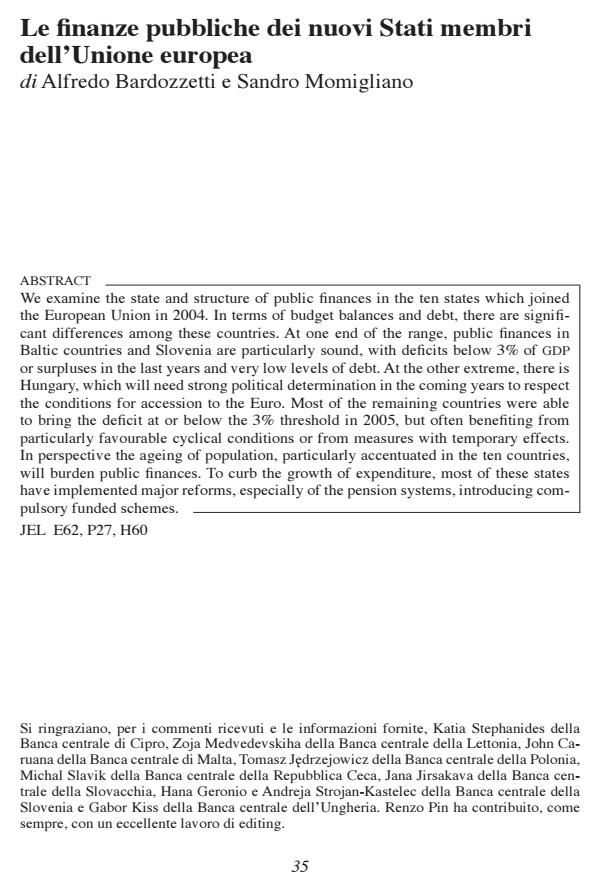Le finanze pubbliche dei nuovi Stati membri dell'Unione europea
Journal title ECONOMIA PUBBLICA
Author/s Alfredo Bardozzetti, Sandro Momigliano
Publishing Year 2006 Issue 2006/5-6
Language Italian Pages 30 P. 35-63 File size 309 KB
DOI
DOI is like a bar code for intellectual property: to have more infomation
click here
Below, you can see the article first page
If you want to buy this article in PDF format, you can do it, following the instructions to buy download credits

FrancoAngeli is member of Publishers International Linking Association, Inc (PILA), a not-for-profit association which run the CrossRef service enabling links to and from online scholarly content.
We examine the state and structure of public finances in the ten states which joined the European Union in 2004. In terms of budget balances and debt, there are signifi- cant differences among these countries. At one end of the range, public finances in Baltic countries and Slovenia are particularly sound, with deficits below 3% of gdp or surpluses in the last years and very low levels of debt. At the other extreme, there is Hungary, which will need strong political determination in the coming years to respect the conditions for accession to the Euro. Most of the remaining countries were able to bring the deficit at or below the 3% threshold in 2005, but often benefiting from particularly favourable cyclical conditions or from measures with temporary effects. In perspective the ageing of population, particularly accentuated in the ten countries, will burden public finances. To curb the growth of expenditure, most of these states have implemented major reforms, especially of the pension systems, introducing compulsory funded schemes.
Alfredo Bardozzetti, Sandro Momigliano, Le finanze pubbliche dei nuovi Stati membri dell'Unione europea in "ECONOMIA PUBBLICA " 5-6/2006, pp 35-63, DOI: